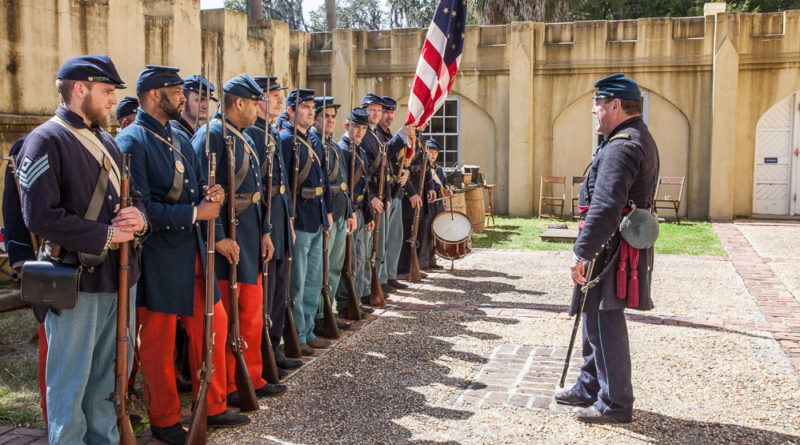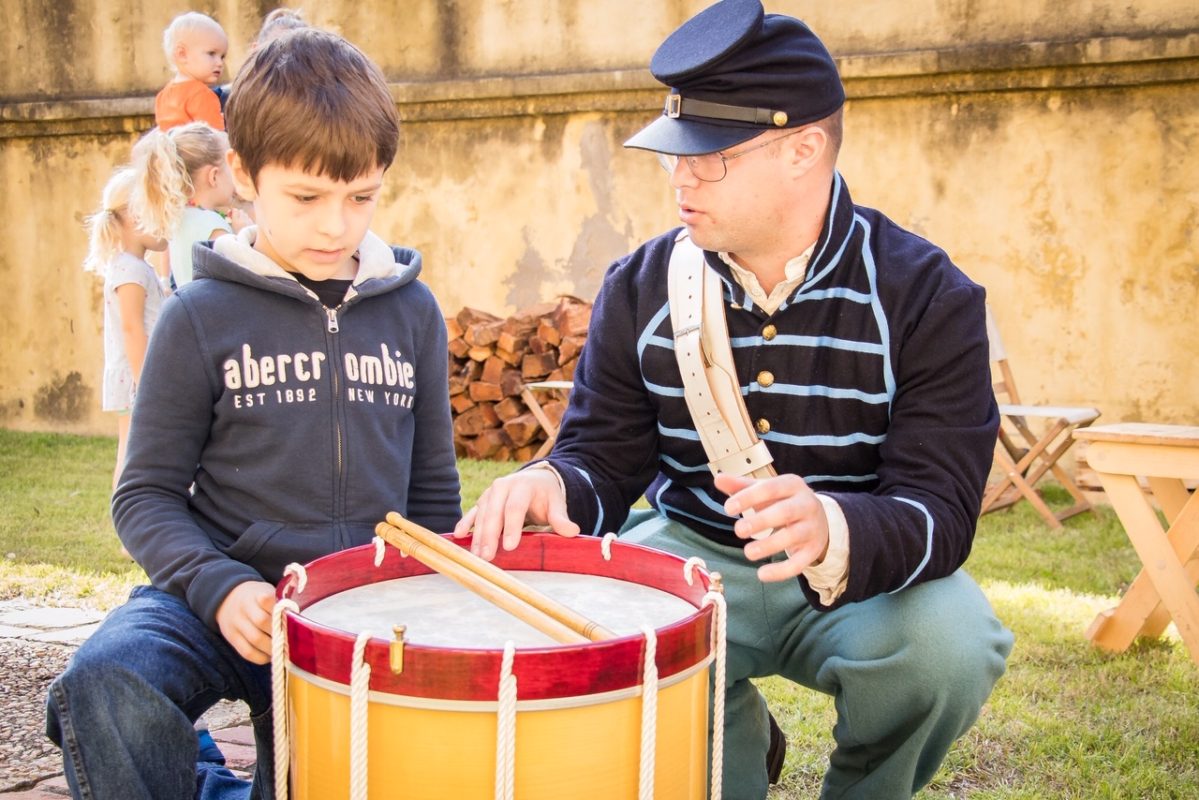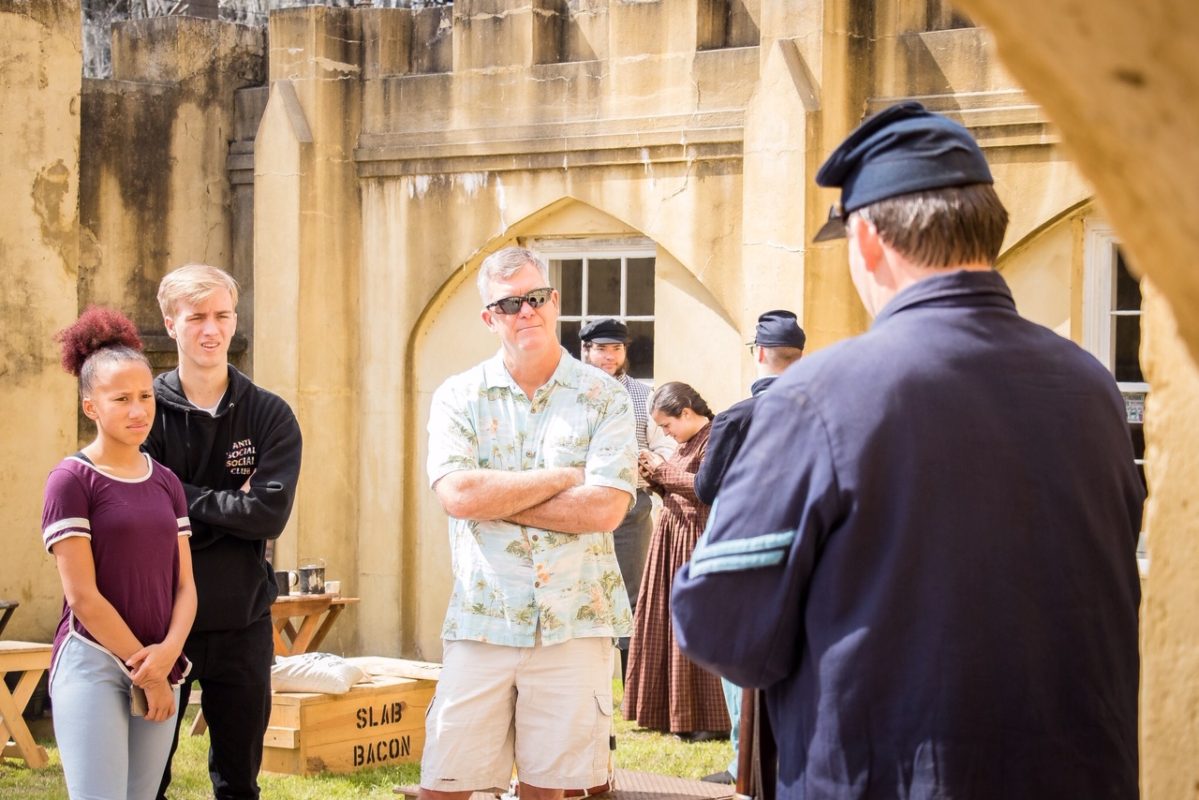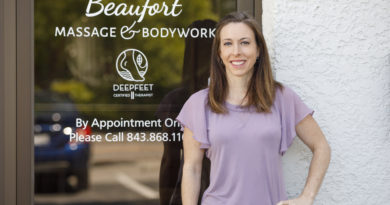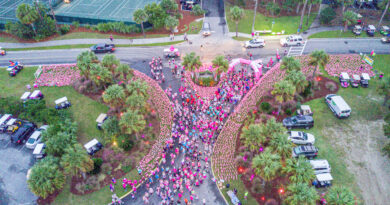UNION TROOPS OCCUPYING THE ARSENAL GIVE LIVING HISTORY LESSONS
story by CAROL LAUVRAY photos by JEFF KIDD
Beaufort History Museum’s Living History Encampment attracts hundreds of visitors each year to the historic Arsenal on Craven Street, to learn first-hand what life was like for soldiers and civilians in Beaufort during the Civil War. Last month on March 9, more than 600 visitors watched as re-enactors from across the southeast portrayed Union troops from the Department of the South who occupied Beaufort Arsenal. Here’s why the Civil War re-enactors and those who came to experience the event—both locals and visitors—love coming to the museum’s Living History Encampment, and why they’ll be back next year.
Lou Evans, a Civil War re-enactor from Senoia, Georgia who organized the re-enactors for the encampment event this year, portrayed the commanding officer of Union Company F of the 48th New York. Evans explained, “This is my fourth living history event hosted by Beaufort History Museum at the Arsenal. I’ve been here every year so far and we plan to continue coming back. Our re-enactors simulate for encampment visitors what life would have been like for the Federal troops who occupied Beaufort and the Arsenal in 1863. Early in the Civil War, the Federals made Beaufort County a center of their operations. Because of Beaufort’s deep-water port, the Union Navy came here in late 1861 and took over Beaufort after the Battle of Port Royal Sound. By 1862, the Union had established a headquarters on Hilton Head Island and operations and hospitals here in Beaufort.”
“I started reenacting in 1988 so it’s more than 30 years now,” Evans said. “We do eight to 10 events a year across the U.S., but mainly on the eastern side of the country ranging from Virginia all the way down into Florida, and west to Mississippi. In the early days of doing re-enactments, battles were the big thing. Living histories like this one at the Beaufort Arsenal are wonderful because when we’re here, we live in garrison and are able to demonstrate what life was like for Federal soldiers encamped inside the armory and for civilians in the town. It’s rewarding for us as re-enactors, as well as for the visitors—we love telling the history and they love to hear it.”
Another re-enactor, Robert Wallace from Raleigh, North Carolina, portrayed a private from Company H of the 6th Connecticut stationed in Beaufort during the war. Wallace said, “I got interested in re-enacting when I was in the eighth grade. I enjoy the fact that I can show the younger generation this is something that actually happened
Jeff Grzelak, a re-enactor from Orlando, Florida, portrayed a sergeant in the 7th Connecticut Infantry who served as quartermaster for the encampment event. “It was the quartermaster’s responsibility to ensure that the soldiers had food and ammunition,” he stated. The re-enactors displayed two quartermaster’s areas, including a fire pit where they actually cooked their meals and an area where ammunition and period guns were displayed. In addition, there was a bedding area where enlisted men slept on the ground on straw and another where officers slept. During the encampment, the re-enactors also demonstrated how Union soldiers would have drilled within the walled courtyard of the Arsenal. Richard Williamson, a Beaufort native, displayed and explained the history of his Civil War-period Dahlgren naval gun. Also on hand for the event were female re-enactors dressed in period clothing, who described what life was like for civilian women in Beaufort during the Civil War.
For this year’s Living History Encampment, the museum partnered with Scott Teodorski of the National Park Service (NPS), Superintendent of the Reconstruction Era National Historical Park. The NPS participated in the encampment event by opening its visitors center on Craven Street across from the Arsenal, so people could see the museum’s Reconstruction Beaufort exhibit, which is on display there, and could learn more about the Reconstruction Era in Beaufort from Teodorski and his staff.
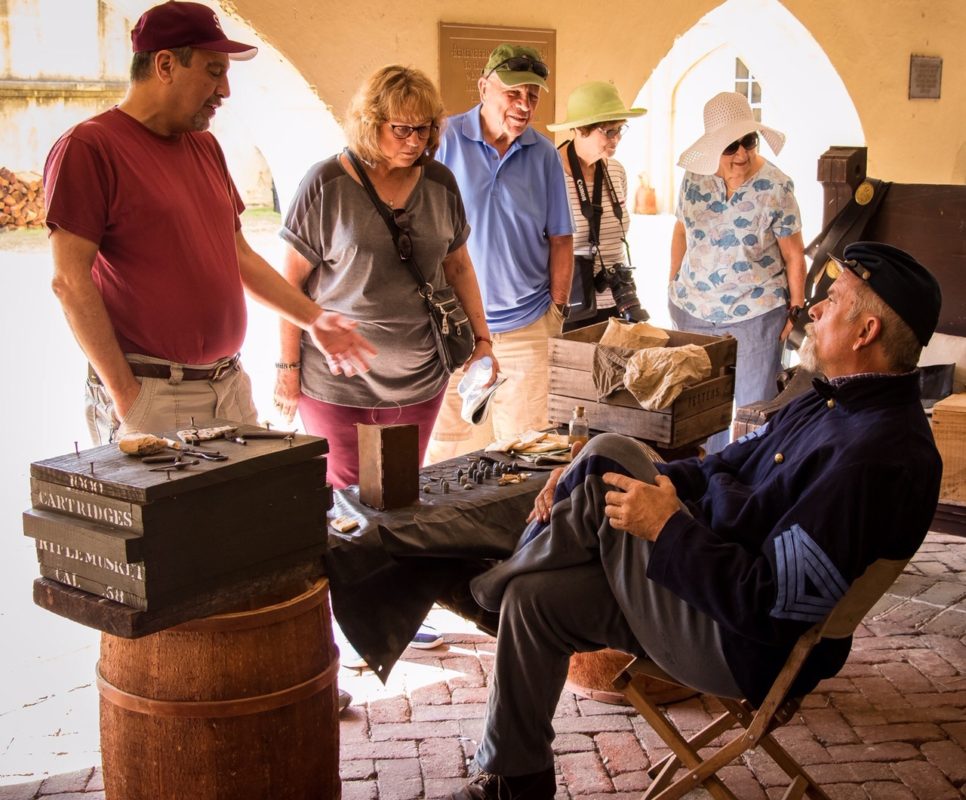
During the Living History Encampment, more than 150 people also visited Beaufort History Museum’s newly renovated main exhibit hall on the second floor of the Arsenal, to learn more about Beaufort’s rich 500-year history. One of the museum’s docents on hand for the Encampment, Tom Vaselopulos, also enjoys being a living historian. He was dressed in the uniform of the 79th New York, which was in Beaufort during the Civil War from November 1861 to June 1862. He recommended to encampment visitors that they tour the museum’s exhibit hall to see its display of Civil War artifacts, including a uniform like that worn by the First South Carolina Negro regiment stationed at Camp Saxton in Port Royal in 1863.
“The City of Beaufort has been utterly fantastic to us,” said re-enactor Lou Evans. “We come here on a Friday in March each year and by the time we leave on Sunday morning, we’ve made new friends. We’ve even had people invite us to lunch and dinner at their homes. They love to hear the stories of what happened in Beaufort during the Civil War. For

